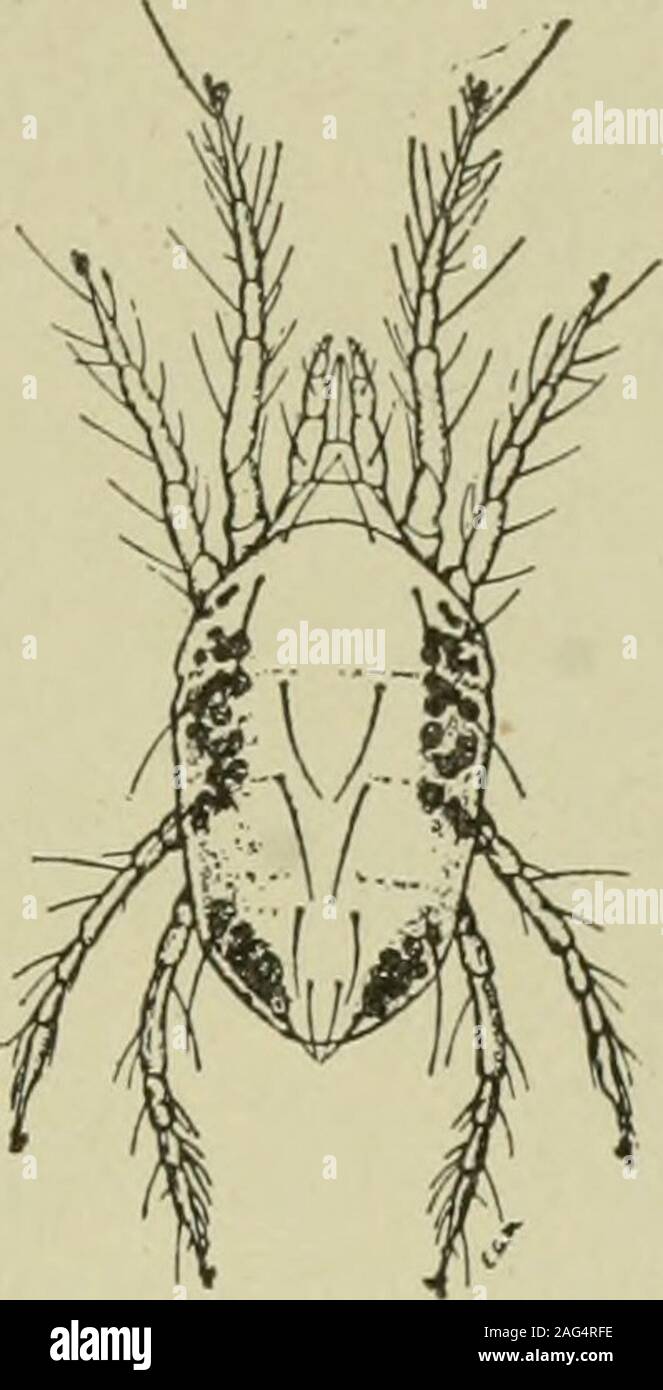. Insect enemies and diseases of the tomato. nt nicotine sulphate combined with soap and applied as aspray has proved more satisfactory than any other. The formulafollows: Nicotine sulphate (40 per cent) teaspoonful, 1 Soap, laundry 1-inch cube, 1 Water gallon, 1 Directions are also furnished on the package. Dissolve the soap in the water, add the nicotine sulphate, and ap-ply as a fine mist-like spray to the lower sides of the leaves, beingcareful to hit or cover all of the lice. Use an under spray. BED SPIDER. Tomatoes, and nearly all vegetables, are subject to attacK by thered spider (fig.

Image details
Contributor:
The Reading Room / Alamy Stock PhotoImage ID:
2AG4RFEFile size:
7.1 MB (194.7 KB Compressed download)Releases:
Model - no | Property - noDo I need a release?Dimensions:
1129 x 2213 px | 19.1 x 37.5 cm | 7.5 x 14.8 inches | 150dpiMore information:
This image is a public domain image, which means either that copyright has expired in the image or the copyright holder has waived their copyright. Alamy charges you a fee for access to the high resolution copy of the image.
This image could have imperfections as it’s either historical or reportage.
. Insect enemies and diseases of the tomato. nt nicotine sulphate combined with soap and applied as aspray has proved more satisfactory than any other. The formulafollows: Nicotine sulphate (40 per cent) teaspoonful, 1 Soap, laundry 1-inch cube, 1 Water gallon, 1 Directions are also furnished on the package. Dissolve the soap in the water, add the nicotine sulphate, and ap-ply as a fine mist-like spray to the lower sides of the leaves, beingcareful to hit or cover all of the lice. Use an under spray. BED SPIDER. Tomatoes, and nearly all vegetables, are subject to attacK by thered spider (fig. 8). This pest is not a true spider, but a reddishmite of almost microscopic size.^ It is well distributed throughoutthe country, and is particularly troublesome on tomatoes, cucumbers, and beans. This mite injures plants by sucking the juices, and whenplants are neglected tiiey become so weakened by loss of sapthat the crop is greatly reduced. In cases of severe attack, mil-lions of red spiders gather on the underside of the foliage, and the. Fig. 8.—Red spider, highly magnified. webs which the insect spins from leaf to leaf canbe easily seen, with the mites passing rapidly overthem in swarms. Frequently the plants look asthough scorched by fire. More often than not thered spiders are present without the growersknowing it, rust being blamed for the injury. Control.—A spray made with 1 pound of laun-dry soap in 8 gallons of water, applied frequentlyto the underside of the leaves, will hold the pestin check. Flowers of sulphur mixed with waterat the rate of 1 ounce to 1 gallon, sprayed over in-fested plants, is a good remedy. Unless the spray-ing is begun when the insects are first noticed andrepeated as often as needed, red spiders are almostcertain to do great harm to delicate plants, sinceif the plants become thoroughly infested they sel-dom survive and the crop is lost. WHITE FL.Y. White flies (fig. 9) frequently cause injury to the tomato, both inthe garden and greenhouse.